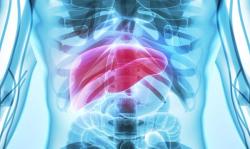
OR WAIT null SECS
Specialists Lead Charge in Direct-Acting Antiviral Prescriptions for Hepatitis C
More than half of DAA prescriptions were prescribed by specialists like gastroenterologist and infectious disease physicians.
Allowing a broad range of physicians prescribing powers for direct-acting antiviral (DAA) therapies for hepatitis C virus (HCV) could be beneficial worldwide.
A team, led by Fergus Stafford, The Kirby Institute, UNSW Sydney, characterized DAA prescribing patterns by general practitioners in the Australian model of DAA access.
Global Patterns
DAA has become the prominent and effective treatment for HCV infections across the world. However, there are several countries where prescription powers for the treatment is relegated to specific medical specialties, preventing the more widespread use.
In the study, the investigators analyzed Pharmaceutical Benefits Scheme (PBS) data for DAA prescribed to patients with chronic HCV between March 2016 and March 2020.
Different Prescribers
They differentiated between prescribers, identifying 3 distinct groups in general practitioners, main specialist groups, which included mainstream specialists like gastroenterologists, infectious disease physicians, sexual health specialists, addiction specialists, psychiatrists, and internal medicine specialists who generally treat HCV, and other prescribers.
The investigators assessed the amount of HCV patients beginning DAA treatment and DAA prescribers, based on prescriber specialty.
The analysis included total of 82,694 patients with HCV prescribed DAA therapy.
Results
Of this patient group, 44% (n = 36,098) were prescribed by general practitioners, 51% (n = 42,585) of cases were prescribed by specialists, and other prescribers accounted for the remaining 5% (n = 4011) of cases.
The median age of patients receiving treatment from specialists was 51 years, which was older than patients treated by general practitioners (46 years).
The patients with more complex disease, including cirrhosis or previous failed hepatitis C treatment, received long duration treatment. However, this type of treatment was less frequently prescribed by general practitioners (n = 2188; 6%), than it was by specialists (n = 5822; 14%).
The number of patients receiving DAA treatment also declined throughout the study.
Between March and December 2016 there were 33,203 patients identified, compared with 20,971 in 2017, 15,209 in 2018, and 11,295 in 2019.
This was especially pronounced for specialists, where there was an 80% decrease in DAA prescriptions from 2016 (n = 21,662) to 2019 (4436).
The decrease was also true for general practitioners.
In 2016, there were 10,531 patients prescribed DAA therapy from general practitioners. However, there was a 44% (n = 5872) drop in prescriptions in 2019.
The proportion of patients treated with DAA where general practitioners prescribed therapy increased from 18% (n = 1113) in March 2016 to 56% (n = 2172) in January-March 2018. It has remained at about 50% since that time.
The investigators also analyzed the number of prescribers in the different categories.
In 2016, 6187 general practitioners prescribed DAA therapy for at least 1 patient. This decreased to 1863 in 2017, 1282 in 2018, and ultimately 943 in 2019.
Nearly 50% of the prescribing general practitioners (n = 2986; 48%) and 14% (n = 112)) of specialists had prescribed DAA therapy for only 1 patient.
On the other hand, 10% (n = 630) of general practitioners and 58% (n = 469) of specialists had treated at least 10 patients.
Finally, the investigators analyzed different regions for the prescribers.
In urban areas, slightly more general practitioners (n = 420; 12%) were treating at least 10 patients, compared with 8% (n = 207) in regional areas.
Conclusions
In total, the data shows DAA therapies are going to be utilized more and more in the coming years.
“We found that the broad DAA prescribing authority in Australia has enabled a large number of GPs to contribute to DAA prescribing, important for health policies in settings with restricted access to therapy,” the authors wrote. “The continuing increase in the number of GPs prescribing DAA and the number treating single patients suggest that GPs are gaining confidence in prescribing DAA therapy.”
Related Content:


